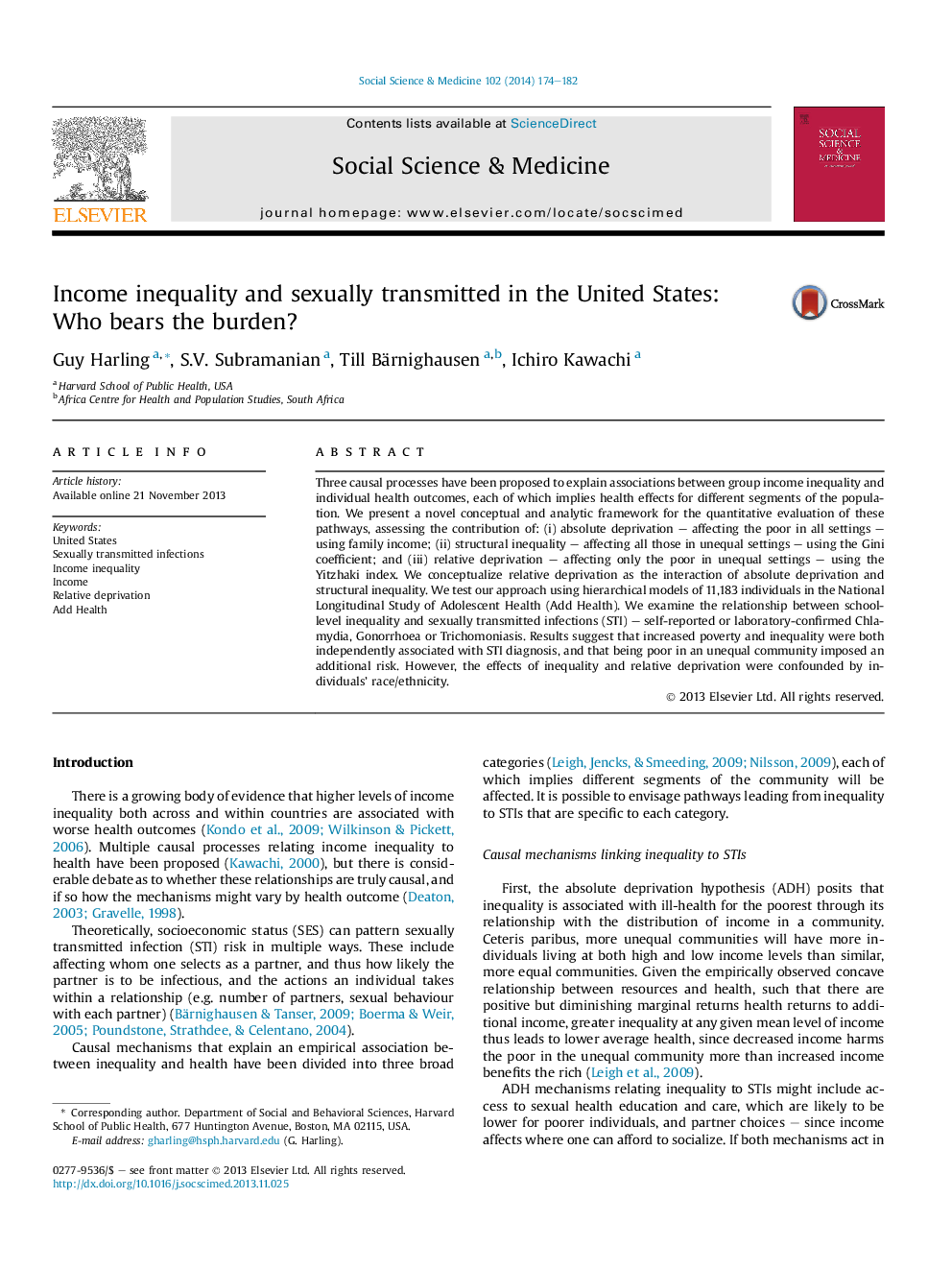| کد مقاله | کد نشریه | سال انتشار | مقاله انگلیسی | نسخه تمام متن |
|---|---|---|---|---|
| 7336118 | 1476066 | 2014 | 9 صفحه PDF | دانلود رایگان |
عنوان انگلیسی مقاله ISI
Income inequality and sexually transmitted in the United States: Who bears the burden?
ترجمه فارسی عنوان
نابرابری درآمد و انتقال جنسی در ایالات متحده: چه کسی این بار را تحمل می کند؟
دانلود مقاله + سفارش ترجمه
دانلود مقاله ISI انگلیسی
رایگان برای ایرانیان
کلمات کلیدی
ایالات متحده، عفونت های منتقله از راه جنسی، نابرابری درآمد، درآمد، محرومیت نسبی، اضافه کردن سلامت،
موضوعات مرتبط
علوم پزشکی و سلامت
پزشکی و دندانپزشکی
سیاست های بهداشت و سلامت عمومی
چکیده انگلیسی
Three causal processes have been proposed to explain associations between group income inequality and individual health outcomes, each of which implies health effects for different segments of the population. We present a novel conceptual and analytic framework for the quantitative evaluation of these pathways, assessing the contribution of: (i) absolute deprivation - affecting the poor in all settings - using family income; (ii) structural inequality - affecting all those in unequal settings - using the Gini coefficient; and (iii) relative deprivation - affecting only the poor in unequal settings - using the Yitzhaki index. We conceptualize relative deprivation as the interaction of absolute deprivation and structural inequality. We test our approach using hierarchical models of 11,183 individuals in the National Longitudinal Study of Adolescent Health (Add Health). We examine the relationship between school-level inequality and sexually transmitted infections (STI) - self-reported or laboratory-confirmed Chlamydia, Gonorrhoea or Trichomoniasis. Results suggest that increased poverty and inequality were both independently associated with STI diagnosis, and that being poor in an unequal community imposed an additional risk. However, the effects of inequality and relative deprivation were confounded by individuals' race/ethnicity.
ناشر
Database: Elsevier - ScienceDirect (ساینس دایرکت)
Journal: Social Science & Medicine - Volume 102, February 2014, Pages 174-182
Journal: Social Science & Medicine - Volume 102, February 2014, Pages 174-182
نویسندگان
Guy Harling, S.V. Subramanian, Till Bärnighausen, Ichiro Kawachi,
